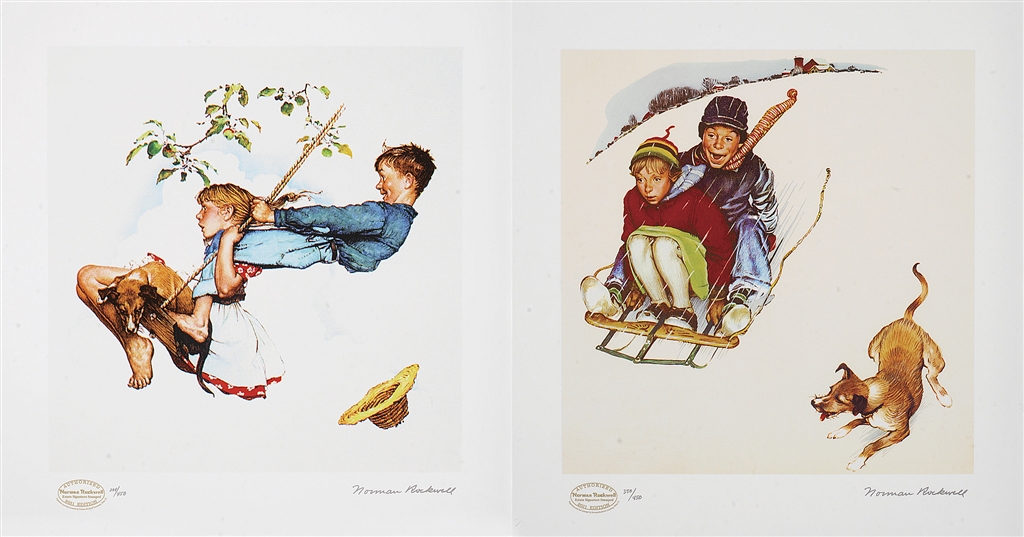See How the Art of Norman Rockwell Defined 20th-Century Americana
Artist Norman Rockwell once said, “I paint life as I would like it to be.”
Over the years, millions of art lovers have embraced Rockwell’s keenly optimistic perspective on humanity, making him one of the most iconic artists of the 20th century.
In fact, it’s hard to hear the word “Americana” and not immediately think of Rockwell’s evocative depictions of American life.
This new video from Park West Gallery, hosted by Gallery Director David Gorman, provides a fascinating overview of Rockwell’s life and career, showing how the artist became an American institution.
Born in 1894 in New York City, Rockwell attended multiple art schools, finally settling into the Art Students League of New York, the alma mater of one of his major influences, artist Howard Pyle.
By the age of 19, he became the art director for Boy’s Life, the official magazine for the Boy Scouts of America. At the age of 22, he began working for the publication that would define his artistic career—The Saturday Evening Post.
Over the next 47 years, Rockwell would create 323 original covers for the Post, one of the most popular publications in the United States at the time. The exposure Rockwell received was unprecedented, allowing his illustrations to reach the hearts of millions of Americans.
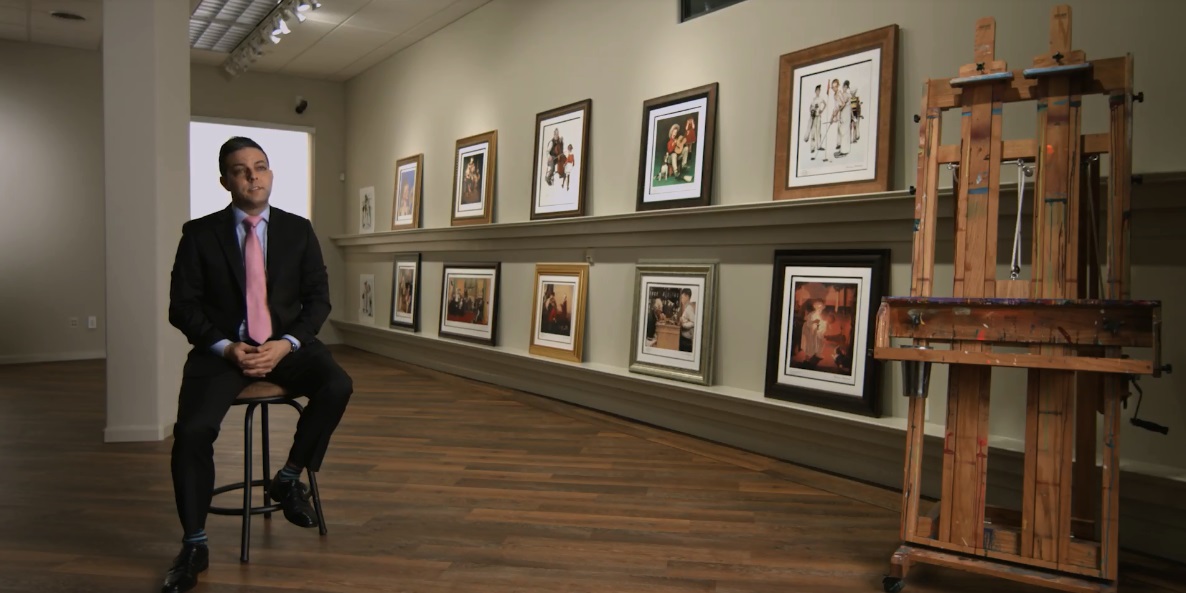
Gallery Director David Gorman discussing Norman Rockwell’s legacy
While art critics often tried to pigeon-hole Rockwell as an “optimistic” artist, any time spent with his body of work clearly shows the artist was so much more. Rockwell lived through two World Wars, the Great Depression, the Civil Rights Movement, and countless other turbulent moments in American history—moments that aren’t ignored in his artwork.
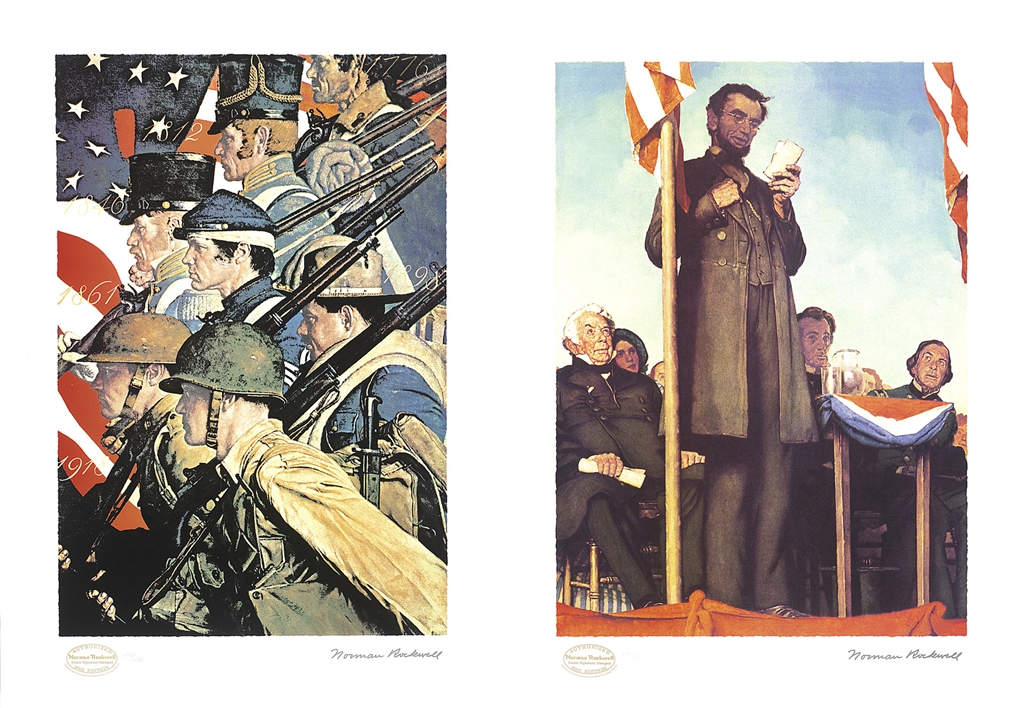
“A Pictorial History of the United States Army,” original painting, c. 1940; seriolithograph, 2012. “Abraham Lincoln Delivering the Gettysburg Address” original painting, 1942; seriolithograph, 2012, Norman Rockwell.
His “Four Freedoms” paintings during World War II made a passionate plea for fundamental human rights in the face of fascism, and they also helped raise over $130 million for the war effort. His heart-wrenching painting “The Problem We All Live With” shone a light on the ugliness of American segregation in a way that few works of art ever could.
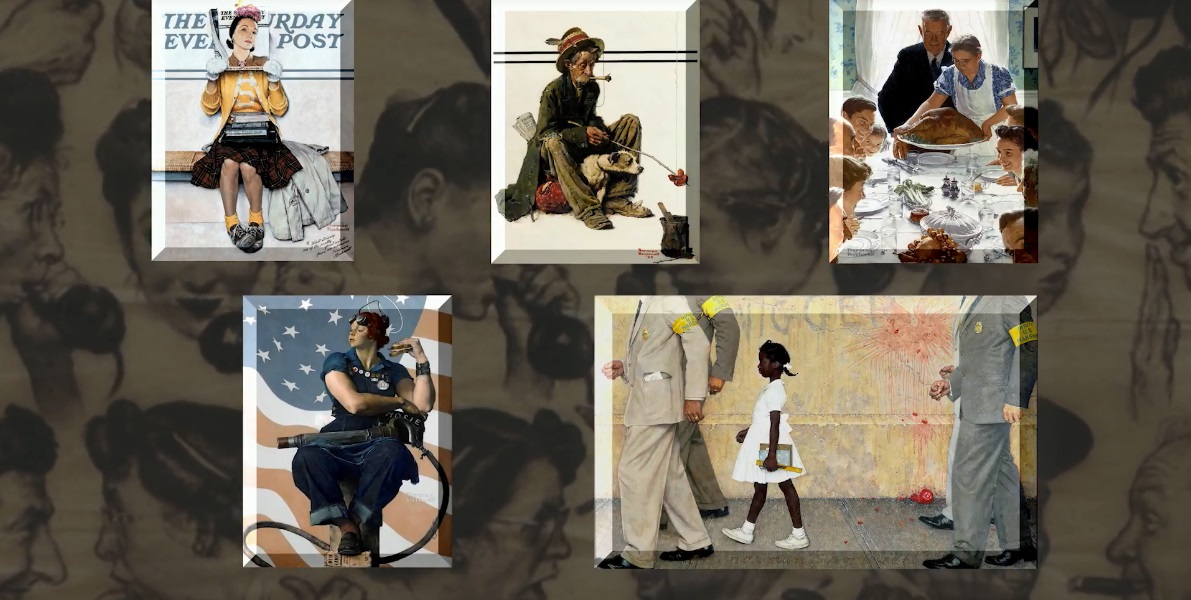
Rockwell was a true American artist and, as such, he saw all sides of his home country and brought that truth to his artwork. Fortunately, Rockwell’s art never stopped looking for the best in his subjects, which is one reason why audiences have never stopped falling in love with his works.
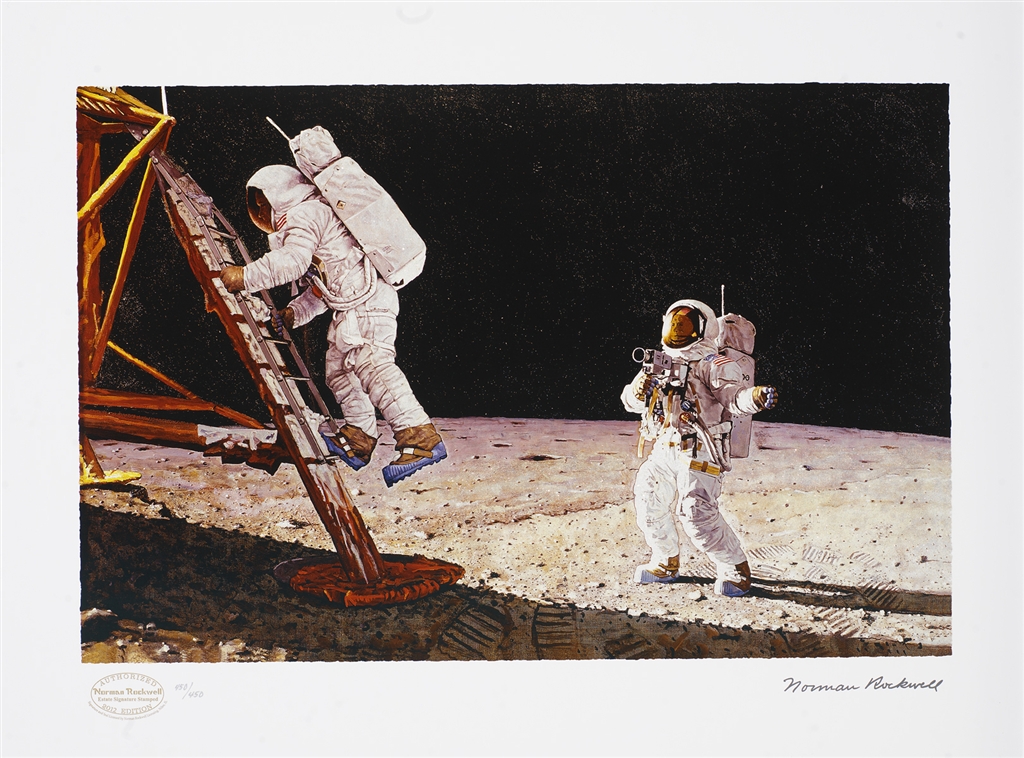
“The Final Impossibility: Man’s Tracks on the Moon,” original illustration, 1967; seriolithograph, 2012, Norman Rockwell.
If you’re interested in collecting the art of Norman Rockwell, view our online collection or contact our gallery consultants at (800) 521-9654 ext. 4 during business hours or at sales@parkwestgallery.com.

